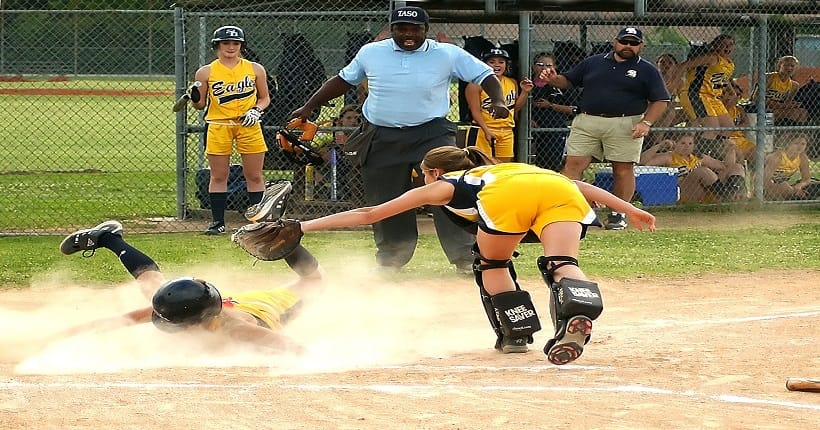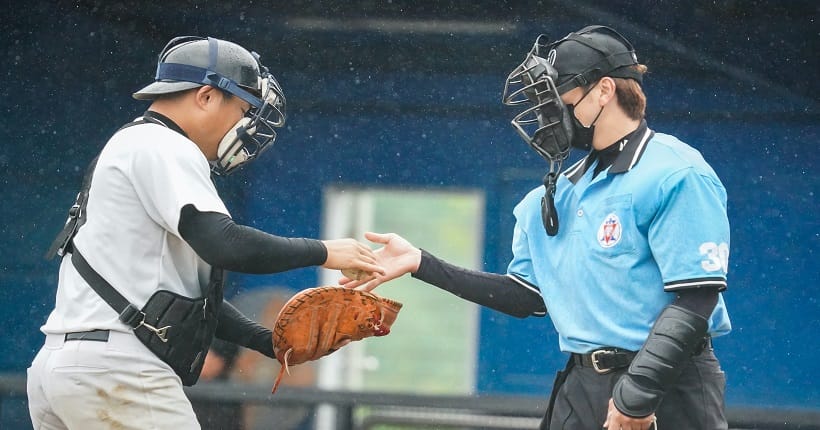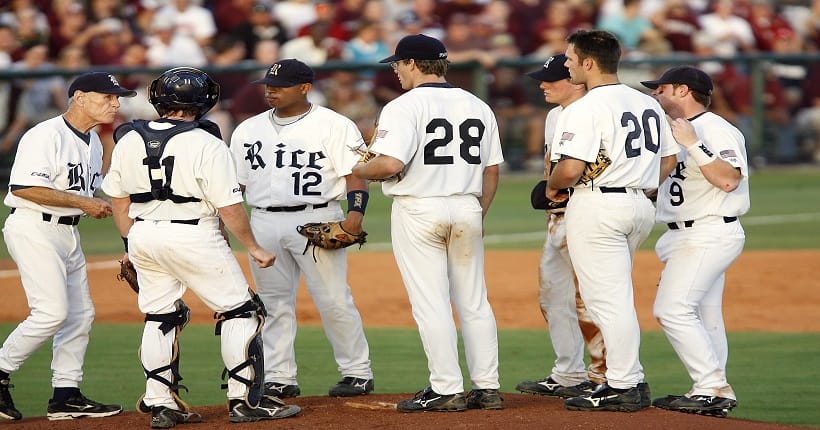How Baseball Saved Itself?
Baseball saved itself by adapting its rules and attracting a younger, more diverse fan base. This sport faced declining popularity but rejuvenated by embracing change and embracing new demographics.
Baseball’s evolution included adjusting game durations, introducing new technologies, and promoting multicultural representation on and off the field. These initiatives helped bring back excitement and relevance to the game, making it more appealing to contemporary audiences. With a refreshed image and a focus on inclusivity and innovation, baseball successfully revitalized itself as a cherished and enduring American pastime.
Declining Popularity And Relevance In Modern Times
Baseball, once America’s favorite pastime, has been struggling to maintain its popularity and relevance in modern times. The sport has faced numerous challenges, such as a saturated sports market and changing fan preferences, as well as a lack of diversity and inclusion. However, baseball has managed to overcome these hurdles and has found ways to save itself from declining further.
Saturated sports market
In today’s world, the sports market is saturated with a plethora of options for fans to choose from. While baseball used to dominate the sports landscape, it now competes with other popular sports such as basketball, football, soccer, and even esports. This increased competition has led to a fragmentation of the fan base, with fans divided among different sports.
Furthermore, the rise of streaming services and the accessibility of watching games online have made it easier for fans to access sports that were once less accessible. This has further contributed to the challenge of maintaining baseball’s popularity.
Changing fan preferences
The preferences of sports fans have changed over time, and baseball has had to adapt to these changing trends. Modern-day fans seek excitement, fast-paced action, and shorter game times. Baseball, with its slower pace and longer game durations, has struggled to meet these expectations.
To address this challenge, baseball has introduced various initiatives to speed up the game and make it more engaging. This includes implementing pitch clocks, limiting mound visits, and experimenting with rule changes during exhibition games. These efforts have aimed to cater to the preferences of the modern fan and bring back the excitement that may have been lost in recent years.
Lack of diversity and inclusion in baseball
Another factor contributing to baseball’s declining popularity is the lack of diversity and inclusion within the sport. Historically, baseball has struggled to attract and retain players from diverse backgrounds, leading to a lack of representation at both the player and leadership levels.
This lack of diversity has alienated potential fans who do not see themselves reflected in the sport. However, baseball is actively working towards addressing this issue by investing in outreach programs, creating opportunities for underrepresented communities, and promoting inclusivity both on and off the field. By embracing diversity, baseball aims to attract a wider audience and ensure that everyone feels welcome and represented.

Credit: www.ebay.com
Challenges In Captivating Younger Generations
As the world continues to evolve with technological advancements, the game of baseball faces several challenges in captivating the younger generations. In this digital age, where video games and other entertainment options dominate the attention of kids and teenagers, traditional sports like baseball are finding it increasingly difficult to compete. Moreover, the declining participation in youth baseball leagues is a concerning trend that further exacerbates the issue. Let’s explore each of these challenges and understand how baseball has managed to regain its popularity and save itself.
Competing With Video Games And Other Entertainment Options
One of the biggest challenges that baseball has faced in recent years is the competition with video games and various other entertainment options that captivate the attention of the younger generations. In a world where fast-paced action and instant gratification are the norms, the slow and strategic nature of baseball can pale in comparison.
However, the baseball industry recognized this challenge and made significant efforts to adapt and appeal to the younger audience. They realized that in order to compete, they had to harness the power of technology and provide an immersive experience for the fans. From introducing advanced statistics and analytics to enhancing the viewing experience with virtual reality and augmented reality, baseball has embraced innovation and used it to engage younger generations.
In addition to technology, MLB teams have also focused on making baseball games a fun and entertaining experience for families. They have introduced themed nights, fireworks shows, and interactive activities to create a festive atmosphere that appeals to young fans. By understanding the interests and preferences of the younger generations, the baseball industry has successfully managed to capture their attention and combat the allure of video games and other entertainment options.
Declining Participation In Youth Baseball Leagues
Another challenge that baseball has faced is the declining participation in youth baseball leagues. With a multitude of options available for kids and teenagers to participate in, such as soccer, basketball, and even eSports, the traditional appeal of baseball has somewhat diminished.
To tackle this issue, baseball organizations have made conscious efforts to foster a love for the game from an early age. They have started initiatives to enhance the Little League experience, making it more accessible, inclusive, and engaging for young players. Through community outreach programs, baseball camps, and partnerships with schools, the game has been reintroduced to schools and neighborhoods, reigniting the passion for baseball in the younger generation.
Moreover, MLB has invested in educational programs, teaching kids the fundamentals of the game and the values it represents, such as teamwork, discipline, and perseverance. By emphasizing the character-building aspects of baseball, they have been able to create a deeper connection with younger players, ultimately encouraging them to participate in youth baseball leagues.
While the challenges in captivating younger generations and declining participation in youth baseball leagues were significant obstacles, the game of baseball has proven its resilience and ability to adapt. Through embracing technology, engaging fans with immersive experiences, and investing in the development of young players, baseball has managed to save itself and continue to thrive as a beloved American pastime.
Embracing Technology And Innovation
In order to stay relevant and captivate modern audiences, baseball has successfully embraced technology and innovation in recent years. Through advancements in broadcasting and viewing experiences, as well as the utilization of interactive apps and virtual reality, the sport has managed to revitalize the fan experience.
Technology Advancements In Broadcasting And Viewing Experience
The introduction of new technologies has greatly enhanced the way baseball games are broadcasted and viewed. With the advent of high-definition cameras and state-of-the-art broadcasting equipment, fans can now enjoy a more immersive and detailed viewing experience. The clarity and precision of the visuals allow spectators to witness every pitch, swing, and catch with incredible detail.
Furthermore, the integration of instant replay systems has revolutionized the way games are officiated. Umpires now have the ability to review close calls and make accurate decisions, minimizing the potential for human error and ensuring fair play.
Revitalizing The Fan Experience Through Interactive Apps And Virtual Reality
Baseball has also capitalized on the rise of interactive apps and virtual reality to bring fans closer to the action. Through the development of dedicated mobile applications, fans can access a wealth of real-time information, such as player stats, game updates, and interactive features that allow them to engage with fellow enthusiasts.
Additionally, virtual reality has allowed baseball fans to experience the game like never before. Through virtual reality headsets, fans can immerse themselves in a simulated environment, putting them right in the middle of a packed stadium or even at the pitcher’s mound. This technology transports fans into a whole new realm of realism and excitement, making them feel as though they are part of the game themselves.
Moreover, virtual reality has also enhanced the training methods for aspiring players. Using virtual reality simulations, players can practice their swings, pitches, and fielding techniques in a lifelike environment, providing a valuable tool for skill development and performance enhancement.
The adoption of technology and innovation has played a crucial role in baseball’s ability to adapt and thrive in the modern era. By embracing advancements in broadcasting and viewing experiences, as well as incorporating interactive apps and virtual reality, the sport has successfully revitalized the fan experience, attracting new audiences and ensuring its long-lasting appeal.
Marketing Initiatives To Attract New Audiences
When it comes to marketing initiatives, baseball has been proactive in attracting new audiences and ensuring its relevance in the modern landscape. A variety of strategies have been employed, with a particular focus on collaborating with popular influencers and celebrities and expanding the sport’s social media presence and engagement. These initiatives have played a crucial role in solidifying baseball’s position and captivating the attention of diverse demographics. Let’s take a closer look at how these marketing efforts have contributed to baseball’s revival.
Collaboration With Popular Influencers And Celebrities
In recent years, baseball has recognized the power of influencer and celebrity collaborations in gaining traction among younger audiences. By harnessing the reach and influence of key figures in pop culture, the sport has successfully increased its visibility and sparked excitement. Influencers and celebrities provide a bridge between baseball and the entertainment world, drawing in fans who may not have previously considered themselves baseball enthusiasts.
One notable collaboration involved partnering with top-tier athletes and musicians who are known for their multi-faceted talents and broad appeal. The goal was to showcase the dynamic and entertaining nature of baseball, breaking through traditional stereotypes and captivating a wider range of fans. Through engaging campaigns and events featuring influential personalities, baseball wove itself seamlessly into popular culture, sparking interest and rekindling a love for the sport.
Expanding Social Media Presence And Engagement
In today’s digital age, a strong social media presence is crucial for any successful marketing campaign. Baseball recognized this and invested heavily in expanding its social media reach, engaging fans on platforms such as Twitter, Instagram, and Facebook. By employing a comprehensive social media strategy, baseball has been able to connect with fans in real time, providing updates, behind-the-scenes content, and interactive opportunities that bring them closer to the game.
With these expanded digital touchpoints, baseball fostered a sense of community among its fans. By creating shareable content, encouraging fan-generated content through hashtags, and leveraging influencers, the sport has successfully cultivated an active and passionate online following. This increased social media engagement not only helps retain existing fans but also attracts new ones, as the excitement and buzz surrounding the sport spread through viral interactions.
To optimize their social media presence, baseball organizations have implemented various tactics, such as live-streaming games, behind-the-scenes access, and exclusive interviews with players. These strategies not only appeal to existing fans but also entice potential fans who crave real-time, immersive content.
Promoting Inclusivity And Diversity
Initiatives To Increase The Participation Of Underrepresented Groups
The world of baseball has long been seen as an exclusive and homogeneous sport. However, in recent years, the focus has shifted towards promoting inclusivity and diversity within the sport. Recognizing the need for change, baseball organizations and teams have implemented initiatives to increase the participation of underrepresented groups. These initiatives aim to break down barriers and create opportunities for individuals from all backgrounds to excel in the world of baseball.
One such initiative is the creation of youth development programs in underserved communities. By targeting neighborhoods with limited access to resources and coaching, baseball organizations are providing these young individuals with the opportunity to learn and play the sport. These programs not only introduce the game to new audiences but also provide a pathway for talented individuals to pursue the sport at higher levels.
In addition to youth development programs, baseball organizations have also implemented scholarship programs for underrepresented groups. These scholarships provide financial assistance to talented athletes who may otherwise be unable to afford the expenses associated with pursuing a career in baseball. By breaking down financial barriers, these scholarships open doors for individuals from diverse backgrounds to showcase their skills and contribute to the sport.
Addressing Racial Disparities Within The Sport
Baseball, like many other sports, has faced issues regarding racial disparities. However, the sport has taken significant steps to address and rectify these issues. From major league teams to grassroots community organizations, efforts have been made to ensure racial equality within the sport.
One notable step is the establishment of diversity and inclusion committees within baseball organizations. These committees work towards creating awareness, implementing policies, and fostering an environment of inclusivity. Through targeted initiatives and programs, they aim to address racial disparities and promote diversity within the sport.
Furthermore, organizations have put in place recruitment strategies that actively seek out and provide opportunities for individuals from diverse backgrounds. By actively reaching out to communities that are historically underrepresented, baseball organizations are ensuring that talented athletes are given equal opportunities to showcase their skills. These efforts not only address racial disparities but also contribute to the overall growth and richness of the sport.
Increased Fan Engagement And Attendance
Baseball has experienced a remarkable resurgence in recent years, with an astounding rise in viewership and ticket sales. The efforts made by the league to create a vibrant and inclusive baseball community have played a significant role in attracting fans back to the stadiums and reigniting their passion for the sport. Let’s explore how this revitalization has occurred.
Rise In Viewership And Ticket Sales
One of the key factors contributing to baseball’s resurgence is the remarkable rise in viewership and ticket sales. The league has implemented various initiatives to make the sport more accessible and entertaining for fans of all ages and backgrounds. Let’s delve into some of these strategies in detail:
- Enhanced broadcasting: The introduction of advanced technologies and high-definition video broadcasting has revolutionized the way fans consume baseball. The crystal-clear visuals and immersive audio have taken the viewing experience to new heights, captivating fans and keeping them engaged throughout the game.
- Engaging content: Baseball teams have embraced the power of social media and digital platforms, creating engaging content that resonates with fans. From behind-the-scenes glimpses to player interviews and highlights, these captivating snippets allow fans to feel connected to their favorite teams on a more personal level.
- International expansion: Baseball’s international appeal has grown significantly, thanks to targeted efforts to expand the sport globally. Exhibition games, international tournaments, and the inclusion of talented players from different countries have broadened the fan base, attracting a diverse range of viewers who may have previously been unfamiliar with the sport.
- Stadium enhancements: To provide an unforgettable in-person experience, stadiums have undergone significant renovations. The addition of modern amenities, comfortable seating, and improved concessions have made attending a baseball game a truly immersive and enjoyable experience.
Creating A Vibrant And Inclusive Baseball Community
Baseball’s resurgence extends beyond mere viewership numbers and ticket sales. The league has been proactive in fostering a vibrant and inclusive baseball community, ensuring that fans from all walks of life feel welcome and valued. Here’s a closer look at how this has been achieved:
| Accessibility: | Efforts have been made to make the sport more accessible to fans with disabilities. From providing accessible seating options to improving signage and communication systems, baseball stadiums are striving to create an inclusive environment for all. |
|---|---|
| Social initiatives: | Baseball organizations have actively engaged in numerous social initiatives, tackling important issues such as diversity, inclusion, and community development. By championing causes that resonate with fans, the league has shown a commitment to making a positive impact beyond the field. |
| Community engagement: | Baseball teams have recognized the importance of connecting with local communities. Through programs such as youth clinics, outreach events, and player appearances, the sport has become an integral part of communities, fostering a sense of pride and belonging. |
| Fan involvement: | The league has encouraged fan involvement through interactive experiences and opportunities to interact with players and teams. From autograph sessions to fan festivals, these initiatives enhance the bond between fans and the sport, ensuring a memorable and engaging experience for all. |
The rise in viewership and ticket sales, combined with the creation of a vibrant and inclusive baseball community, has undoubtedly played a pivotal role in saving the sport. As baseball continues to evolve and adapt to the changing preferences of fans, it is set to endure as a beloved pastime for generations to come.
Developing Next Generation Of Players And Fans
Baseball, once facing declining interest and participation, has successfully revitalized itself by implementing several initiatives that focus on fostering youth participation and interest, as well as creating pathways for young talent development. These efforts have not only helped the sport bounce back but also ensure a bright future by cultivating a new generation of players and fans.
Initiatives To Foster Youth Participation And Interest
- Revamped School Programs: Baseball organizations have collaborated with schools to integrate the sport into physical education curriculum. By introducing baseball to young children at an early age, they get the opportunity to experience the game firsthand and develop an interest.
- Youth Leagues & Tournaments: Various leagues and tournaments have been established to provide local communities with structured youth baseball programs. These initiatives not only provide an avenue for youngsters to play the sport but also instill the values of teamwork, discipline, and sportsmanship.
- Urban Outreach Programs: In order to diversify and expand its reach, baseball organizations have initiated programs aimed at urban areas. These initiatives focus on providing access to necessary facilities and equipment, as well as coaching and training, to children who may not have had previous exposure to the sport.
Creating Pathways For Young Talent Development
- Player Development Academies: Baseball organizations have established player development academies to identify and nurture promising young talent. These academies provide comprehensive training, mentorship, and specialized coaching from experienced professionals, helping to shape the next generation of baseball players.
- Scholarship Programs: To ensure that talented individuals have the opportunity to pursue their dreams, scholarship programs have been introduced. These programs provide financial support to aspiring players who may not have the means to cover the costs associated with specialized training and travel.
- Talent Scouting: Baseball organizations have strengthened their talent scouting efforts by investing in advanced technology and professional scouts. This enables them to identify young athletes with exceptional skills and potential, allowing for early recruitment and development.
By implementing these initiatives and strategies, baseball has successfully developed a strong foundation for the next generation of players and fans. By fostering youth participation, generating interest, and creating pathways for talent development, the sport ensures a bright future while maintaining its position as America’s pastime.
Ensuring Long-term Sustainability
Growing Revenue Streams And Financial Stability
Being financially stable is crucial for any organization’s long-term sustainability, and baseball is no exception. In order to ensure its longevity, the sport has implemented strategies to grow revenue streams and maintain financial stability. By doing so, baseball not only secures its place in the sports industry but also strengthens its ability to invest in players, facilities, and overall growth.
One of the key strategies employed by baseball is expanding its revenue streams. Historically, the primary sources of revenue for baseball were ticket sales and broadcasting rights. However, to adapt to changing times and consumer behavior, the sport has diversified its revenue streams. Now, baseball generates income from various sources, including sponsorships, merchandise sales, licensing agreements, and digital media platforms. By tapping into these additional revenue streams, baseball can create a more stable financial foundation and reduce reliance on traditional sources.
Moreover, baseball has also prioritized financial stability by implementing strong financial management practices. By maintaining healthy budgets, monitoring expenses, and seeking cost-effective solutions, baseball organizations can better weather financial challenges and ensure long-term sustainability. Additionally, embracing technology and data analytics has helped teams optimize their operations and make informed decisions, leading to more efficient resource allocation and financial planning.
To further support financial stability, baseball has fostered partnerships with local communities and businesses. By engaging with local sponsors and supporting community initiatives, the sport gains not only financial support but also a positive public perception. This mutually beneficial relationship helps baseball organizations establish themselves as integral parts of their communities, creating a loyal and invested fan base.
In summary, growing revenue streams and maintaining financial stability are vital for the long-term sustainability of baseball. By diversifying revenue sources, implementing sound financial management practices, and fostering partnerships with communities, baseball can secure its place in the sports industry and continue to captivate fans for generations to come.
Frequently Asked Questions For How Baseball Saved Itself?
Q: How Did Baseball Save Itself From Declining Popularity?
A: Baseball revamped its marketing strategies, introduced new talent, and embraced technological advancements, captivating a broader audience.
Q: Why Did Baseball Face A Decline In Popularity?
A: Baseball faced a decline due to competition from other sports, lack of innovation, and disconnected younger audience.
Q: What Steps Did Baseball Take To Attract New Fans?
A: Baseball stepped up its outreach efforts through social media promotions, interactive fan experiences, and community involvement.
Q: How Did Baseball Adapt To Changing Demographics?
A: Baseball actively engaged with diverse communities, celebrated multiculturalism, and provided opportunities for underrepresented groups.
Q: What Role Did Technology Play In Saving Baseball?
A: Technology revolutionized the game with instant replays, statistical analyses, and online streaming, enhancing the fan experience.
Q: What Future Trends Can We Expect In Baseball’s Revival?
A: Expect innovations like virtual reality experiences, personalized content, and increased global presence to boost baseball’s revival.
Conclusion
The revival of baseball was a triumph achieved through strategic changes, passionate fan engagement, and embracing modern technology. From revitalizing the fan experience with mobile apps and interactive features to implementing new rules that increased the game’s pace and excitement, baseball has managed to stay relevant in a rapidly evolving sports landscape.
With its rich history and adaptability, baseball has proven that it can continue to captivate audiences for years to come. So, let’s play ball and keep the tradition alive!







